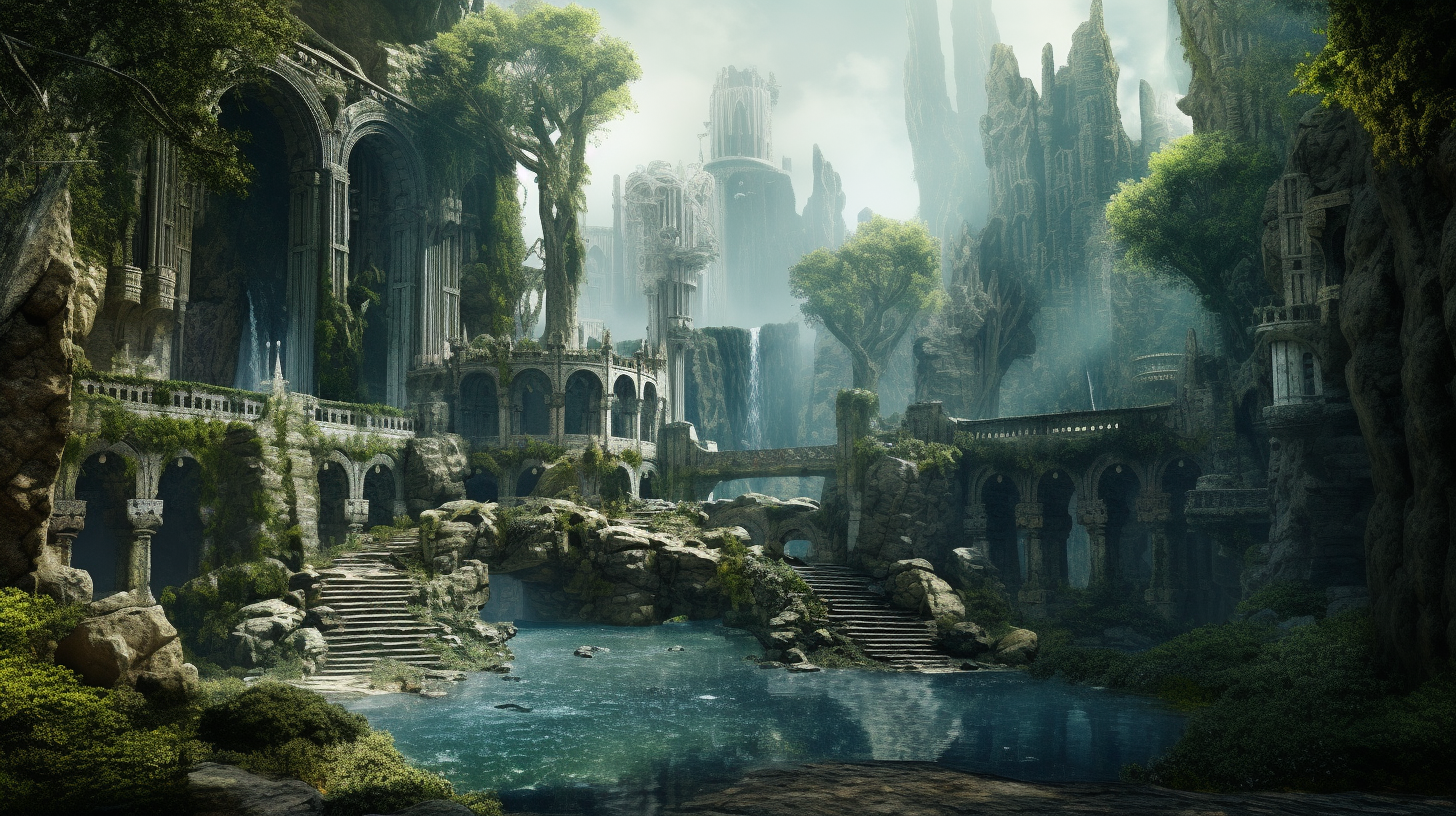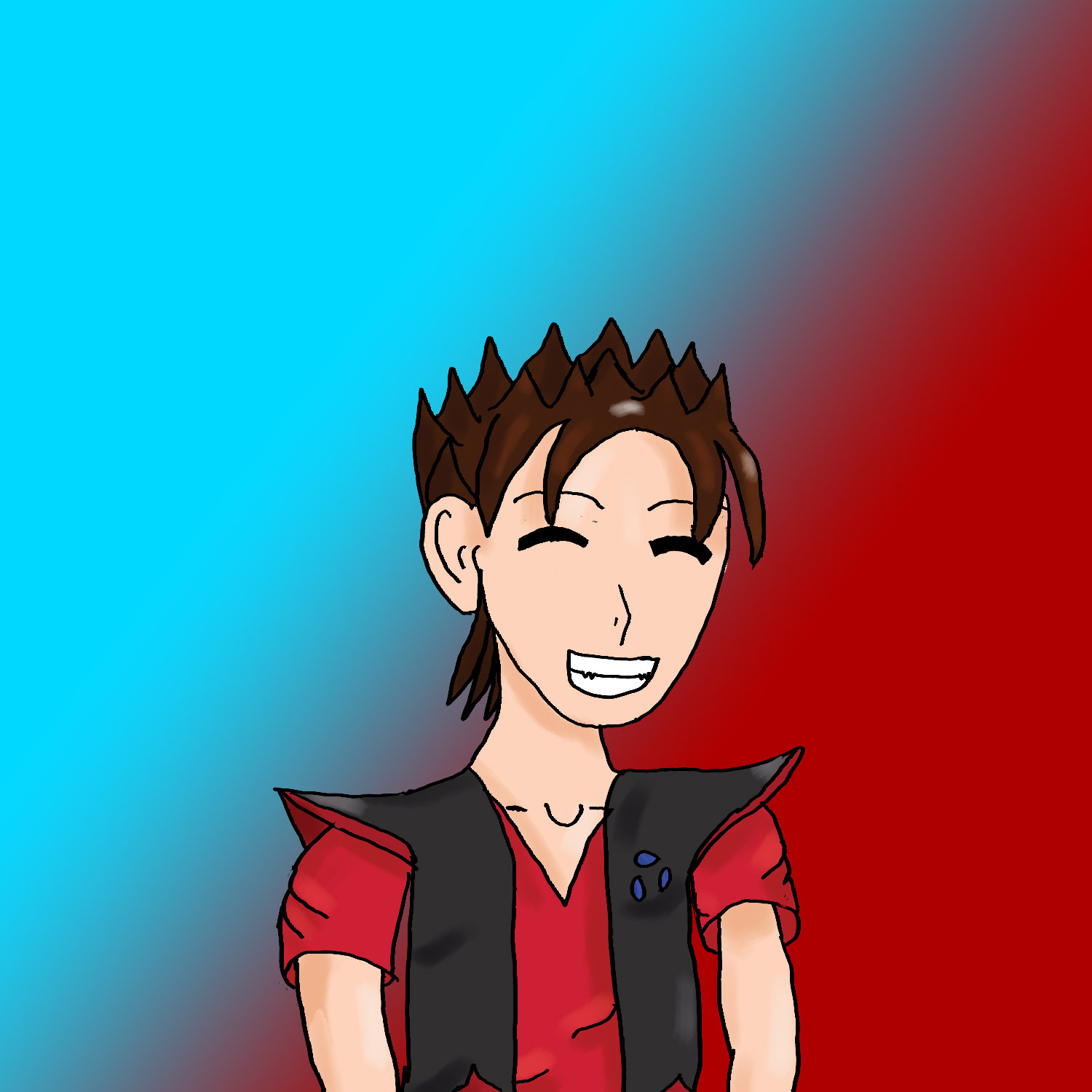We shall stand in the eternal watch, guard and protect, until Myth Drannor stands proud again!
Myth Drannor, formerly known as the Imperial city of Cormanthor, the City of Song, or the City of Love among other names, was the former capital city Cormanthyr in the forest of Cormanthor. It was considered by many to be the pinnacle of shared knowledge, culture, and civilization in Faerûn, as well a beacon of serenity and solidarity in the chaotic Realms.
For hundreds of years after the Weeping War, Myth Drannor languished as fiend-infested ruins. After hundreds of years the city was reclaimed by the elves of Evermeet in the late 14th century DR. It enjoyed a century-long renaissance, before falling to ruin once more.
The stone towers of Myth Drannor were predominantly tall and graceful in appearance, though some of those used by wizards took the shape of fantastic creatures or forms found in nature. The "naturally-grown" structures of wood and plant life, formed by the Oacil'Quevan ritual of complement, were among the most breath-taking in all the Realms.
Cobbled streets wound through the city, running in-between the ground-level buildings of elven design and picturesque glades and city parks. Embedded within the roads were markers for the levitation pillars, shafts of magical energy that could lift an individual to the skybridges and elegant treetop dwellings set within the canopy of Cormanthor.
There was an expansive set of Dwarven Dungeons that ran underneath Myth Drannor, that was inter-connected with many of the subterranean dwellings that were built by the city's non-elven residents.
During the height of its splendor, Myth Drannor was home to some of the most famous and knowledgeable of the Realms' residents. The Seven Wizards who taught at the city's school of magic had a lasting legacy that influenced practitioners of the Art for centuries to follow.
The city attracted artists, scholars craftspeople from all across the Realms. A person was just as likely to find a learned sage or world-traveled bard as they were to encounter an artificer of fantastic magic items.
In the Ruins
Following its destruction in the 8th century DR, Myth Drannor became overrun by many monstrous, aberrant, and horrific creatures. Entities known as wizshades haunted the city's once-majestic wizard-towers, while dweomervores sought out magical power to consume for sustenance. Interestingly enough, the city's ruins was the location for the first sightings of the rarely-seen fang dragons.
Also in the ruins were undead horrors rarely encountered by mortals – magic-wielding illithids known as alhoons,[148] burnbones, and an army bone nagas.Not all the undead in ruined Myth Drannor were malevolent however, as the baelnorn remained as vigilant sentries watching over the tombs of their deceased kin.
The more aberrant denizens included the horrific phaerimm that escaped from beneath Anauroch, and a single deepspawn that took control of the ruined Speculum.
Through the centuries of ruin devils and other fiends run rampant through Myth Drannor. One contingent of baatezu once fell under the command of the fallen solar Malkizid, while another was led by the pit fiend Aglaeroch
Myth Drannor was one of four old communities of Cormanthyr, alongside the Elven Court, Semberholme, and the Tangled Trees.
Myth Drannor was constructed around two tributaries that came together to form Oacenth's Stream, which flowed south through Tilver's Dam to Glyryrryl's pool in the southern end of the city. Just north of the city proper was the Polyandrium, a network of crypts and tombs built beneath an old battlefield,[40] and the Shrine of Mystra.
As of the late 15th century DR, two notable landmarks stood in stark contrast to the restored City of Song: the mold-covered fortress known as the Citadel of Fungi, and the Shadowfell-corrupted Demon Estate of the Fey'ri.
Geographical Features
Myth Drannor was built in such a way that its layout resembled the head of a battleaxe, with the blade pointed to the west. The western half of Myth Drannor was the older of the two, home to the "Old City" of elves as well as the "Temple" and "Lake Wards" while the eastern half, named Dlabraddath for its designer Labrad, featured numerous parks, gardens, and other sites of natural beauty, along with the homes of non-elven citizens.
The two approximate halves were linked by the large curved bridges that spanned the streams that ran through the city in a north-south direction.








Wow, I haven't heard this name since way long ago
Creator of Araea, Megacorpolis, and many others.